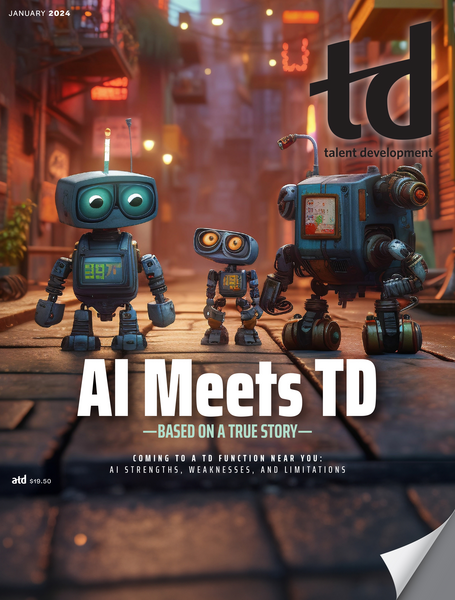TD Magazine Article
Age Is More Than Just a Number
Different generations of employees have varying opinions on work life and culture.
Tue Jan 02 2024

Different generations of employees have varying opinions on work life and culture.
As more workers put off retirement—by necessity or choice—the US workforce will continue to see a greater abundance of different generations collaborating at their jobs and companies. In its 2023 Generations at Work Report, FlexJobs took a snapshot of different generations' attitudes and working preferences, particularly Gen X, millennials, and Gen Z.
A recurring finding was that the three generations fell into two camps on most issues: Gen Zers in one, millennials and Gen Xers in the other. For example, amid persistent uncertainty in the economy throughout 2023, Gen Zers are more optimistic about career outlook and the job market than the latter group. Three-quarters of Gen Z respondents feel good about career outlook versus less than half of millennials and Gen Xers. And nearly two-thirds of Gen Zers think the job market is better than in 2022, while only one-third of millennials and 28 percent of Gen Xers agree.
Bucking a stereotype of the more transient, less loyal younger worker, millennials and Gen X respondents reported interest in changing jobs at a higher rate than Gen Z respondents.
The groups also differed on remote work. Sixty-two percent of the older respondents said completely working from home was their ideal work environment, while the most popular work environment for younger respondents was "hybrid, mostly office," with remote being a far distant second choice.
To enhance the collaboration of different generations in the workplace, talent development professionals can leverage organization development and design principles. For instance, take a diversity, equity, inclusion, and belonging lens: TD teams can ensure their organizations consider age in their DEIB efforts and acknowledge how ageism can manifest as bias against older and younger workers alike.
According to the 2023 Association for Talent Development whitepaper, Diversity, Equity, Inclusion, and Belonging Education, 23 percent of organizations said they were doing well in terms of including age in DEIB efforts, 50 percent had room for improvement, and 27 percent were doing poorly.
Despite differences in generational preferences, TD professionals should encourage employees to find commonalities, such as that they all want a stable, fair-paying job that treats them equitably and enriches their lives—no matter where they work.

